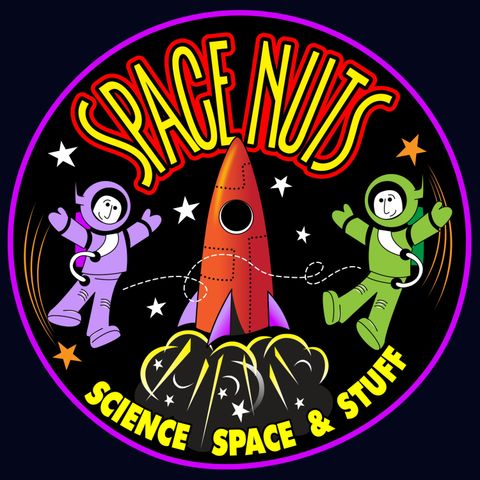
Contacts
Info
Join Professor Fred Watson, world-renowned Astronomer at Large, and Sci-Fi Author and Broadcaster Andrew Dunkley, on their captivating podcast, Space Nuts. Dive into the vast universe of space, astronomy and...
show moreTwo episodes a week with news and explainer focused editions published on Thursday's and our Listener Q&A focused edition on Monday's.

Space Nuts
Space Nuts
#437: Mars' Sulphur Surprise & Extreme Exoplanet Orbits
#437-438 Plus: Sulphur on Mars & Exoplanet Orbits: Unveiling the Unexpected
#436: Cosmic Ripples & Matter Creation: Listener Questions Explored
#435: Intermediate Black Holes & Earth's Earliest Life
#435-436 Plus: Intermediate Black Holes & Earth's First Ancestors
#434: Gravity, Energy, and Hidden Galaxies: Listener Queries Unpacked
#433: Marsquakes Surge & Parker Probe's Record Speed
#433-434 Plus: Marsquakes & Parker Probe's Solar Speed: Discoveries Unveiled
#432: Virtual Particles & Black Hole Mysteries: Listener Questions Explored
#431: Ancient Universe Revealed by Webb & Space Junk Hits Home
#437-438 Plus: Sulphur on Mars & Exoplanet Orbits: Unveiling the Unexpected
#435-436 Plus: Intermediate Black Holes & Earth's First Ancestors
#433-434 Plus: Marsquakes & Parker Probe's Solar Speed: Discoveries Unveiled
#429-430 Plus: Starliner Struggles & Titan's Coastal Conundrums: Space Mysteries Unveiled
SN427-428 Plus: Martian Oddities & Space Health: James Webb's Latest Discovery
#425-426 Plus: NASA's AR Toy & Orphan Stars: Cosmic Revelations
#423-424 Premium: Earth-Like Exoplanet & Alien Megastructures: New Frontiers Explored
#421-422 Premium: Zebrafish in Space & Cosmic Cold Spots
#419-420 Premium: Blue Origin's Bounce Back & Fluffy Planets: The Space Menu Expands
#417-418 Premium: From Solar Spectacles to Speedy Spacecraft: Pushing Boundaries Beyond the Red Planet
Join Professor Fred Watson, world-renowned Astronomer at Large, and Sci-Fi Author and Broadcaster Andrew Dunkley, on their captivating podcast, Space Nuts. Dive into the vast universe of space, astronomy and...
show moreTwo episodes a week with news and explainer focused editions published on Thursday's and our Listener Q&A focused edition on Monday's.
Information
| Author | bitesz.com |
| Organization | bitesz.com |
| Categories | Astronomy , Natural Sciences , Science |
| Website | www.spacenutspodcast.com |
| spacenuts@bitesz.com |
Copyright 2024 - Spreaker Inc. an iHeartMedia Company
